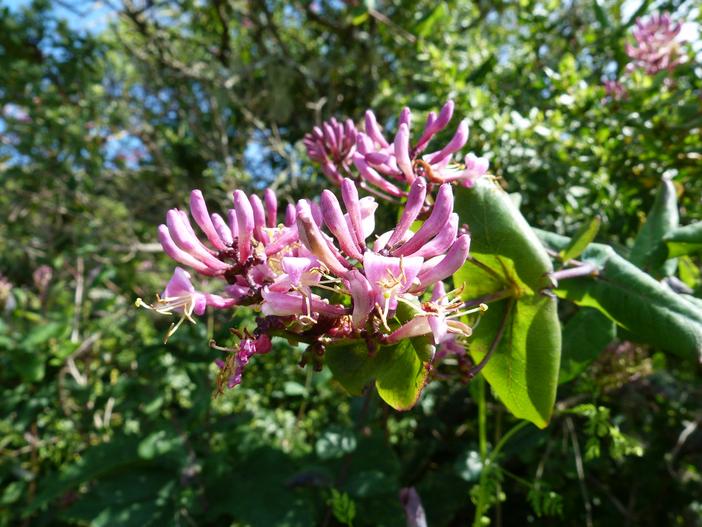Pink Honeysuckle
(Lonicera hispidula)
Pink Honeysuckle (Lonicera hispidula)
/
/

StephanieFalzone
CC BY 2.0


















































































Estimated Native Range
Summary
Pink Honeysuckle is valued for its adaptability to various light conditions and its ability to attract wildlife. It is often used in native plant gardens, for erosion control on slopes, and as a component in habitat restoration projects. This vine is drought-tolerant once established, making it suitable for xeriscaping. It prefers well-drained soils but can tolerate a range of soil types, from sandy to loamy. While it can grow in full sun to full shade, dappled light conditions mimic its natural understory habitat. Gardeners should be aware that it can become aggressive in favorable conditions and may require pruning to manage its growth. It is also susceptible to powdery mildew and aphids. There are no widely recognized cultivars of this species in the horticultural trade, but its natural form is well-regarded for its ecological contributions and ease of care.CC BY-SA 4.0
Plant Description
- Plant Type: Vine
- Height: 3-20 feet
- Width: 6-8 feet
- Growth Rate: Moderate
- Flower Color: Pink
- Flowering Season: Spring, Summer
- Leaf Retention: Deciduous
Growth Requirements
- Sun: Full Sun, Part Shade, Full Shade
- Water: Low, Medium
- Drainage: Medium
Common Uses
Bee Garden, Bird Garden, Butterfly Garden, Deer Resistant, Drought Tolerant, Erosion Control, Hummingbird Garden, Low Maintenance, Showy Flowers
Natural Habitat
Native to chaparral, mixed evergreen forests, coastal sage scrub in California, and Garry oak woodlands in British Columbia
Other Names
Common Names: California Honeysuckle , Hairy Honeysuckle
Scientific Names: Lonicera hispidula , Lonicera pilosa , Lonicera hispidula var. californica , Lonicera californica , Caprifolium hispidulum , Lonicera microphylla , Caprifolium californicum , Caprifolium hispidulum var. californicum , Caprifolium subspicatum , Lonicera ciliosa f. depressa , Lonicera hispidula var. douglasii
GBIF Accepted Name: Lonicera hispidula (Lindl.) Douglas ex Lindl.